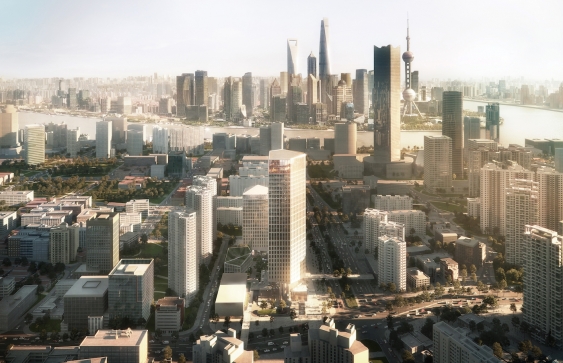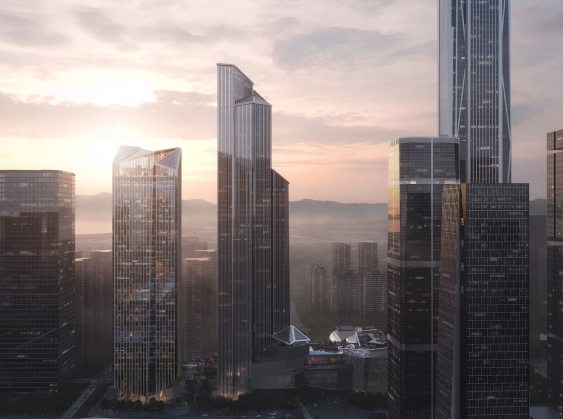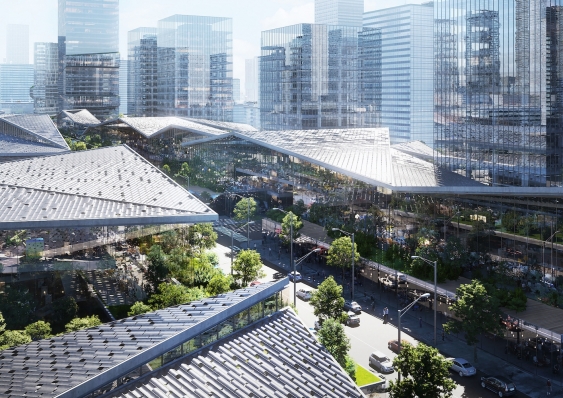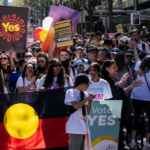The high rise future of city living

Having designed and developed award-winning high-rise buildings around the world, UNSW alumna Zhizhe Yu has a birds-eye view when it comes to assessing the past, present and future of cities.
The architect and urban designer’s hands-on approach to space making has seen her manage city-defining projects totalling over two million square metres.
“There is a push for taller, more efficient and more iconic buildings and skylines,” she says. “With climate change and social issues, for me, the pursuit of taller buildings can slow down a little bit.”
Ms Yu’s approach to humanising high density is three-fold: shifting to building around people and experience, rethinking densities to create more liveable cities, and connecting people and place through technology. Her approach is informed by her design firms’ exploits in space.

Ms Yu hopes to humanise high density living. Photo: Supplied.
Ms Yu is the co-founder and Managing Director of AI SpaceFactory, a multi-planetary architectural and technology design agency, building for Earth and space. The firm, which has offices in New York, Shanghai and Barcelona, achieved renown last year when it won NASA’s 3D-Printed Mars Habitat Challenge.
“If you really think about it, our Earth is facing the exact same problem [as Mars], which is a shortage of material and shortage of land,” she says.
“What we learnt through this process and through this challenge NASA presented to us, leads us to understand the nature of materials and the nature of construction. That’s why we now, in the R&D part, really focus on the research of the materials and also 3D printing with recyclable material.”
“Right now, as a practice, we want to focus on creating more human densities [on Earth],” she says. “Of course, we are fascinated by space, but our goal is not necessarily to only build in space. Our interest is in how we can preserve and build our Earth better.”
The problem is one of density. By 2050, 70% of people will live in cities. During previous decades, tall buildings have been considered one of the most effective solutions to accommodate rapid urban growth and increase density, says Ms Yu.
She believes this solution, adopted ‘out of necessity’, can fail to respond to social, cultural, environmental and wellbeing pressures generated by the pace and scale of urbanisation.
The result is cities without character and culture. High-rise high-density cities have become globalised and placeless, she says.
“I’m also concerned and aware of the social and environmental issues generated by high densities,” she says. “The complaints we hear the most are they lack human interaction and disconnect with nature and disconnect with people.”
She advocates for cities that are true to their local context – attuned to climate, culture, society and historical significance – with new high-density urban spaces that are accessible, responsive and personal.

By 2050, 70% of people will live in cities. Photo: Supplied.
“Urban design sets up the guidelines for a city, district or region before architects begin to design, which is really critical… We cannot just start inserting high-rise buildings into a highly populated region.
“We have to take the first step to understand the urban context, to understand the social setting, the infrastructure in places, and then that’s when tall buildings can really play their role.”
Ms Yu will discuss her design philosophy, humanising high density, in the annual Paul Reid Lecture in Urban Design, the first instalment of the 2020 UTZON Lecture series hosted by UNSW Built Environment. Ms Yu’s lecture will mark both 10 years of the UTZON Lecture series as well as the 25th anniversary of the Master of Urban Development & Design program.
“It’s a great honour for me to be invited to give this lecture,” she says. “Studying at UNSW really prepared me to take off on all the adventures that I’ve had over the past ten years.
“I do hope my perspective for practice and for urban design brings some refreshing insights,” she says.
Ms Yu says that in addition to high-density living, health and wellbeing, environmental issues and social equity are the universal challenges impacting urban design now and in the future.
“The challenges [the industry] faces in the future are no different to anyone else,” she says. “Health, wellbeing and environmental sustainability…[things] not many people think about when designing densities,” referencing the coronavirus outbreak in Wuhan.
It is about “how we set up a city from the beginning… and provide guidelines for the city… so that when architects come on board – when governments come on board – we can all work with a framework to make it more sustainable.”

Health, wellbeing and environmental sustainability are additional challenges for future cities. Photo: Supplied.
She says these challenges are the collective responsibility of urban designers, but also one she takes personally.
“For me, I feel it is not only the responsibility I have in society, but I believe it is also the power I have to help society – to create a city which can respond to those aspects,” she says.
Benjamin Knight is a Media and Content Assistant at UNSW in Sydney. He gained a Bachelor of Media degree in Public Relations and Advertising in 2017.











